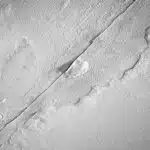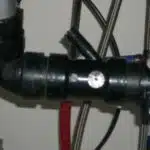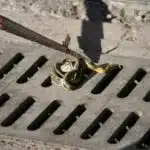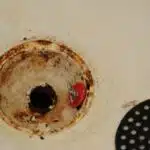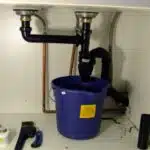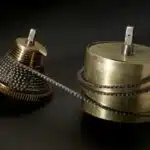As a plumbing technician or handyman, one of the common issues encountered by homeowners is a clogged bathtub drain. This can be caused by various factors such as hair, soap scum, and other debris that accumulate over time. In order to effectively address this problem, it is important to know how to remove a tub drain in your home.
Removing a tub drain may seem like a daunting task for some homeowners, but with the right tools and techniques, it can be done easily and efficiently. By learning how to remove a tub drain on your own, you can save money on professional plumbing services and have the satisfaction of being able to solve household problems on your own. In this article, we will provide you with step-by-step instructions on how to remove a tub drain in your home, along with tips and tricks for preventing clogs in the future.
Gather The Necessary Tools And Materials
To successfully remove a tub drain, it is important to gather the necessary tools and materials beforehand. Choosing appropriate tools is critical for the success of your project. You will need a drain key or pliers, which will allow you to grip the drain and turn it counterclockwise. Additionally, you may need a screwdriver or drill to remove any screws that are holding the drain in place.
Finding the right replacement parts is another crucial step when removing a tub drain. It is important to ensure that you have all of the required parts before starting your project. Check with your local hardware store or plumbing supply store to find out what parts are needed for your specific type of bathtub drain. Replacement parts may include gaskets, washers, and overflow plates.
Once you have gathered all of the necessary tools and replacement parts, you can begin working on removing the tub drain. However, before starting any work, it is important to turn off the water supply to prevent any damage or flooding. This can usually be done by shutting off the water valve located near your bathtub or by turning off the main water supply valve for your home.
Turn Off The Water Supply
As you gather the necessary tools and materials for removing a tub drain in your home, it is important to also consider the proper steps for turning off the water supply. This step should not be overlooked, as it can prevent potential hazards and damages during your plumbing project. One figure of speech that can be used to describe this step is “shutting off the water valves is like putting on a seatbelt before driving – it’s a necessary precaution.”
To properly turn off the water supply for plumbing projects, locate the shut-off valves near your bathtub. In most cases, there are two valves – one for hot water and one for cold water. Turn both valves clockwise until they are fully closed. It is important to note that some older homes may not have individual shut-off valves for each fixture; in this case, you will need to turn off the main valve that controls all water flow into your home.
Before removing the tub drain, take additional steps to ensure that there is no remaining water in or around your bathtub. Use a plunger or towel to remove any standing water from the tub, and also check underneath the tub for any leaks or drips that may need to be addressed before proceeding with your project. By taking these precautionary steps, you can ensure a safe and successful removal of the tub drain stopper without any unexpected issues arising.
Remove The Drain Stopper
To remove the drain stopper, start by cleaning it thoroughly. The stopper needs to be free of any debris or buildup that may hinder its smooth removal. Use a brush or cloth and some mild detergent to clean the stopper, including the underside.
Once you have cleaned the stopper, you can then proceed to remove it from the drain. There are different types of drain stoppers, but most can be removed by twisting them counterclockwise until they come loose from the drain. Some stoppers may have a small set screw on their shaft that you need to loosen before twisting.
After removing the stopper, inspect it for any damage or wear and tear that may require replacement. If necessary, replace the old stopper with a new one that is compatible with your tub’s drain size and type. Replacing a damaged or worn out stopper will ensure proper drainage and prevent future clogs. With the stopper removed, you can now move on to locating the screw or nut holding the drain in place.
Locate The Screw Or Nut Holding The Drain In Place
After removing the drain stopper, it’s now time to locate the screw or nut that is holding the drain in place. This is an important step in removing the tub drain because if you try to remove the drain without first finding and loosening this screw or nut, you could end up damaging your tub or even breaking the drain.
To begin, take a close look at your tub drain and try to identify what type of screw or nut is holding it in place. There are several different types of screws and nuts that could be used for this purpose, including hexagonal nuts, Phillips head screws, or flathead screws. Once you have identified what type of fastener is being used, you can select an appropriate tool for removing it.
If you’re dealing with a hexagonal nut, you may want to use a pair of pliers or a specialized tool called a drain key to loosen it. On the other hand, if your tub drain is held in place with a screw (such as a Phillips head or flathead), you will need to use an appropriately sized screwdriver to remove it. By taking the time to properly identify and remove this fastener before attempting to remove the entire tub drain assembly, you can help ensure that the process goes smoothly and without incident.
Remove The Screw Or Nut
- To begin the process of removing a tub drain, the first step is to locate the screw.
- The screw can usually be found underneath the drain, and is accessible from the top of the tub.
- To remove the screw, use a screwdriver or other tool to loosen it.
- Once the screw has been loosened, it can be removed completely.
- To replace the screw, ensure that the same size and type of screw is used.
- Finally, use the same tool as before to tighten the screw back into place.
Locating The Screw
When it comes to removing a tub drain, one of the first steps is locating the screw or nut that needs to be removed. As a plumbing technician, I have seen many homeowners struggle with this step, often making common mistakes that can lead to further issues down the line. In this article, I will explore some alternatives for locating the screw or nut and provide tips on how to avoid these common mistakes.
The first step in locating the screw or nut is to look for any visible markings or indicators on the drain itself. Some manufacturers may place a small arrow or symbol near where the screw or nut is located. If there are no visible indicators, try gently pushing down on different parts of the drain cover while turning it counterclockwise. This can help you feel where the screw or nut is located and make it easier to remove.
One common mistake that homeowners make when trying to locate the screw or nut is using excessive force. This can damage the drain cover and make it more difficult to remove in the future. Another mistake is assuming that all tub drains are built the same way. It’s important to read up on your specific type of tub drain and follow manufacturer instructions carefully. By taking your time and exploring different options, you can safely and effectively remove your tub drain without causing any unnecessary damage.
Removing The Screw
After successfully locating the screw or nut, the next step is to remove it. Using pliers properly is crucial in this process. It’s important to choose the right tool for the job and ensure that you have a good grip on the screw or nut before attempting to turn it. Pliers with serrated jaws are ideal for removing stubborn screws or nuts.
When removing the screw, turn it counterclockwise with gentle but firm pressure until it loosens. If you encounter resistance, avoid forcing it as this can damage the drain cover and make it more difficult to remove later on. Instead, try spraying a lubricant such as WD-40 on the threads of the screw to help loosen it up.
In some cases, the screw may be stripped or corroded which can make removal challenging. In these situations, a specialized tool such as a screw extractor may be necessary. This tool is designed specifically for removing stripped screws and can save time and frustration in attempting to remove them with pliers alone. By following these tips and using caution when removing screws or nuts, you can effectively remove your tub drain without causing any unnecessary damage.
Replacing The Screw
After successfully removing the screw or nut, the next step is to replace it. However, before doing so, it’s important to troubleshoot any issues that may have caused the need for removal in the first place. Common reasons for a stuck or corroded screw include age and water damage, which can cause rust and make it difficult to remove. If you encounter these issues, it’s important to address them before replacing the screw to prevent future problems.
Once you have removed the old screw, inspect it for signs of damage or wear. If necessary, take note of its size and thread count so that you can find an appropriate replacement. Finding replacement parts can be challenging if you’re not familiar with plumbing supplies, but most hardware stores carry a variety of screws and nuts that are suitable for tub drains. It’s important to choose a replacement that matches the original in size and thread count to ensure a secure fit.
When replacing the screw or nut, be sure to tighten it firmly but not too tightly as this can cause damage to the drain cover or threads. Use pliers or a wrench to turn the screw clockwise until it is snugly in place. Finally, test your work by running water through the drain and checking for leaks. By following these steps carefully and ensuring that all parts are properly secured, you can avoid future problems with your tub drain.
Loosen The Drain With Pliers Or Drain Key
To loosen the drain, you can use pliers or a drain key. There are different types of pliers that you can use depending on the type of drain that you have. For example, if your drain has crossbars, you can use needle-nose pliers. If it has wings, then adjustable pliers would be more suitable.
When using a drain key, it is important to make sure that it fits snugly into the drain. You can adjust the size of the key by turning the wing nut until it fits properly. Once the key is in place, turn it counterclockwise to loosen the drain. Be careful not to apply too much force as this may damage the drain or pipe.
By using either pliers or a drain key, you should be able to loosen the drain enough to remove it from the tub body. This will allow you to access any debris or clogs that may be causing issues with your drainage system. In order to remove the drain body itself, continue reading for further instructions on how to complete this process safely and effectively.
Remove The Drain Body
Now that you have loosened the drain with pliers or a drain key, it’s time to remove the drain body. This involves using a drain key, which is a tool specifically designed for this purpose. The drain key fits into the crosshairs of the drain and allows you to turn the entire assembly counterclockwise to remove it.
To use the drain key, insert it into the crosshairs of the drain and turn it counterclockwise with a wrench until it starts to loosen. Once you’ve turned the assembly enough, you should be able to remove it by hand. Be sure to keep your fingers away from any sharp edges as you remove it.
After removing the drain body, take some time to clean out any debris that may have accumulated in the drain assembly. This will help prevent clogs in the future and ensure that water flows freely through your pipes. Use a wire brush or other cleaning tool to scrub away any buildup, then rinse thoroughly with hot water before replacing the assembly. With these steps completed, your bathtub should be free of any obstructions and ready for use once again!
Clean The Drain Assembly
To clean the drain assembly, you will need to remove any debris that may be causing a clog. The cleaning technique that you use will depend on the type of clog that is present. Some common clog causes include hair, soap scum, and mineral buildup. To remove a hair clog, you can use a snake or drain auger to dislodge the hair and pull it out of the drain.
Soap scum can be removed by using a mixture of baking soda and vinegar. First, pour about half a cup of baking soda down the drain. Then, pour about half a cup of vinegar on top of the baking soda. The mixture will fizz and bubble, which helps to break down the soap scum. Wait for about 10 minutes before flushing the drain with hot water.
If mineral buildup is causing your clog, you can use a commercial drain cleaner or make your own using salt and baking soda. Mix equal parts salt and baking soda together in a bowl and then pour it down the drain. Follow up with boiling water to help dissolve any remaining mineral buildup. Once you have cleaned out your drain assembly thoroughly, you can move on to replacing the drain gasket or washer without any issues.
Transition: Now that we have covered how to clean your drain assembly thoroughly let’s move on to replacing your old gasket or washer with brand new ones in order to prevent future clogs from occurring again!
Replace The Drain Gasket Or Washer
Once you have successfully removed the tub drain, it is advisable to inspect the gasket or washer underneath it. Common issues with gaskets or washers include cracking, drying out, and becoming misshapen over time due to exposure to water and chemicals. If the gasket or washer appears worn out, it is important to replace it before reinstalling the drain body.
DIY solutions for replacing a drain gasket or washer are readily available. First, ensure that you have the correct size and type of replacement part by checking your tub’s specifications or taking a sample to a hardware store. Next, remove any remaining debris from the drain hole and clean the surrounding area. Then, gently insert the new gasket or washer into place and press firmly until it sits flush with the tub surface.
Choosing the right replacement parts can be crucial in preventing future leaks and damage. It is important to select a high-quality product that is compatible with your specific tub model and material. Additionally, consider purchasing a replacement kit that includes all necessary components for a complete overhaul of your drain assembly. By investing in quality parts upfront and following proper installation procedures, you can extend the lifespan of your plumbing system and avoid costly repairs down the line.
As you prepare to reinstall the drain body, keep in mind that proper alignment and sealing are key factors in ensuring a leak-free connection. Take care not to overtighten any screws or bolts during this process as this can cause damage to both your tub and plumbing system. With attention to detail and patience throughout each step of this process, you can successfully replace your tub’s drain gasket or washer for improved function and longevity.
Reinstall The Drain Body
Once you have successfully removed the tub drain, it is now time to reinstall the drain body. Although this process may seem straightforward, it is important to understand that there are many benefits of professional installation, which can prevent common mistakes from occurring during reinstallation.
One of the most significant benefits of professional installation is that it eliminates any chance of leakage around the drain. Leakage can cause water damage to your home and lead to costly repairs. Additionally, a professional plumber or handyman will be able to ensure that the drain body is properly aligned with the overflow and waste pipes, which will prevent any clogs from forming in the future.
When reinstalling the drain body, it is essential to avoid common mistakes such as over-tightening or under-tightening the screw or nut. Over-tightening can cause damage to the threads on both the screw and nut, while under-tightening can result in leakage around the drain. Therefore, it is crucial to use a torque wrench or pliers to ensure that you apply enough pressure without causing any damage.
Now that you understand why professional installation is beneficial and what common mistakes to avoid during reinstallation, it’s time to tighten the screw or nut. Remember not to over-tighten or under-tighten as doing so may cause future problems with your bathtub. By following these simple steps carefully, you can rest assured that your bathtub will function correctly for years to come.
Tighten The Screw Or Nut
To tighten the screw or nut of a tub drain, you will need a pair of pliers or a drain key. Before tightening, it is important to apply lubricant to prevent any rust or corrosion that may have occurred over time. This will ensure that the screw or nut can be easily tightened and loosened in the future.
To begin, locate the screw or nut that needs tightening. Using your pliers or drain key, turn the screw or nut clockwise until it is snug. Be careful not to overtighten as this can cause damage to your drain and lead to leaks.
If you are having difficulty turning the screw or nut, try applying lubricant before attempting to tighten it again. This will allow for easier turning and prevent any further damage to your plumbing system. Once you have successfully tightened the screw or nut, move onto reinstalling the drain stopper.
Reinstall The Drain Stopper
- In order to reinstall the drain stopper, it is important to gently remove the stopper from the drain.
- Doing so requires the use of a flat head screwdriver and a pair of pliers.
- After the stopper is removed, the nut must be firmly tightened to ensure a secure connection.
- It is recommended to apply a small amount of plumber’s putty to the nut before tightening to create a watertight seal.
Gently Remove The Stopper
Removing a tub drain can be a daunting task, especially for those who lack experience in plumbing. However, with the right tools and techniques, it can be done without causing any damage. One of the first steps in removing a tub drain is to gently remove the stopper. This requires patience and precision to avoid damaging the bathtub or other surrounding fixtures.
To prevent damage when removing the stopper, start by cleaning the area around the drain with a soft cloth. This will ensure that there is no debris or residue that could cause scratches or other types of damage during removal. Next, use a lubricant such as WD-40 to loosen the stopper from its position. Spray it generously around the base of the stopper and let it sit for about 10 minutes before attempting to remove it.
Using a gentle yet firm grip on the stopper, slowly turn it counterclockwise until it comes loose from its position. If you encounter resistance, do not force it as this could cause damage to both the stopper and the bathtub itself. Instead, apply more lubricant and try again after waiting another 10 minutes. By following these simple guidelines on how to gently remove a tub drain, you can successfully complete this task without causing any harm to your bathroom fixtures or yourself.
Tighten The Nut
After successfully removing the tub drain stopper, the next step is to reinstall it securely. This involves tightening the nut that holds the drain in place underneath the bathtub. Tightening this nut can be challenging, but with the right tools and techniques, it can be done effectively.
To tighten the nut, use a drain key that fits over the nut and turn it clockwise until it is snugly fastened. It is important not to overtighten the nut as this could cause damage to both the drain and bathtub. If you encounter resistance while tightening the nut, apply some lubricant around its base to make it easier to turn.
After tightening the nut, test your work by running water down the drain and checking for any leaks. If there are no issues, then you have successfully reinstalled your tub drain stopper. These simple steps can help you avoid costly plumbing repairs and keep your bathroom fixtures in good condition for years to come.
Turn On The Water Supply
Firstly, it is crucial to turn on the water supply before proceeding with any plumbing work. This will help in checking whether the tub drain has been removed successfully or not. It is also essential to ensure that the water flow is smooth and there are no leaks or clogs in the drain.
Common mistakes that people make while removing a tub drain include using improper tools or techniques, not turning off the water supply before beginning work, and forgetting to replace any damaged parts of the drain assembly. Troubleshooting tips for these issues include using only appropriate tools such as pliers and screwdrivers, shutting off the main water valve before starting work, and replacing any broken parts with new ones that fit well.
Once you have turned on the water supply, it’s time to test the drain for proper functioning. Check if there are any leaks or clogs in the drain by running hot and cold water through it. If there are any problems, troubleshoot them by following appropriate steps. In case you encounter major issues or are unsure about your DIY skills, do not hesitate to call a professional plumber for assistance.
Test The Drain
After removing the tub drain, it is important to test whether the drain is working properly. Testing the drain involves filling up the bathtub with water and observing how quickly it drains out. A slow-draining tub can be a sign of an underlying issue that needs to be addressed.
Common issues that can cause a slow-draining tub include clogs in the drainpipe or trap, a malfunctioning pop-up stopper or strainer, or even insufficient venting of the plumbing system. Troubleshooting tips for these issues include using a plunger or drain snake to clear any blockages, cleaning out any debris from the strainer or pop-up stopper, and ensuring proper ventilation by checking the vent stack on your roof.
If you find that your tub is still draining slowly after attempting these troubleshooting tips, it may be time to call in a professional plumber. A trained technician will have specialized tools such as cameras and hydro jets to diagnose and fix more complex plumbing issues.
- To test your tub drain, fill up your bathtub with water.
- Observe how quickly it drains out.
- If you notice slow draining, troubleshoot common issues such as clogs and improper ventilation.
The next step in maintaining a properly functioning bathtub drain is preventing future clogs. By taking preventative measures such as using hair catchers in your drain and avoiding pouring grease down your sink, you can avoid future plumbing problems.
Tips For Preventing Future Clogs
Preventing Clogs in your bathtub is crucial to maintain the flow of water and avoid the hassle of clogged drains. It’s like maintaining a car; if you don’t change its oil, it will break down eventually. Similarly, if you don’t take care of your drain system, it will eventually cause blockage and damage to your pipes. Here are some tips that can help prevent future clogs.
Firstly, regular Drain Maintenance is essential. You can use natural cleaners such as vinegar and baking soda to clear debris from your drains. Pour a cup of baking soda into the drain followed by a cup of vinegar; let it sit for several minutes then flush with hot water. This method is effective in removing hair, soap scum, and other buildup from your drain.
Secondly, avoid pouring grease or oil down the drain as they solidify once cooled and create blockages in pipes. Dispose of them properly in a container or trash bin instead. Also, be careful about what goes down the drain – coffee grounds, eggshells, and fibrous vegetables should never be put down the kitchen sink.
Lastly, using strainers can help trap unwanted materials before they enter your pipes. Place them over your shower or tub drain to catch hair and soap scum before they cause trouble in your plumbing system. By following these simple tips for preventing clogs, you’ll save yourself time and money on costly repairs in the long run.
Remember that prevention is always better than cure when it comes to maintaining a healthy drainage system at home. Follow these tips regularly to ensure that you have a smooth running plumbing system all year round!
Conclusion
Removing a tub drain in your home may seem like a daunting task, but with the right tools and steps, it can be accomplished easily. Start by gathering the necessary materials such as pliers, a screwdriver, and a drain removal tool. Once you have these items on hand, turn off the water supply and remove the drain stopper. Locate the screw or nut holding the drain in place and carefully remove it. Reinstall the drain stopper and turn on the water supply to test the drain.
It is important to take precautions to prevent future clogs in your tub drain. One simple solution is to use a hair catcher to trap any loose hair or debris before it goes down the drain. Additionally, regularly pouring hot water down the drain can help dissolve any build-up of soap scum or other materials that can lead to clogs.
In conclusion, removing a tub drain in your home requires some basic tools and knowledge of plumbing techniques. By following these steps carefully and taking preventive measures, you can ensure that your tub remains free from clogs for years to come. Remember, prevention is key when it comes to maintaining your plumbing system – so don’t hesitate to take action if you notice any signs of trouble!
Image Credits
- “Draining the birth tub” by moppet65535 (featured)

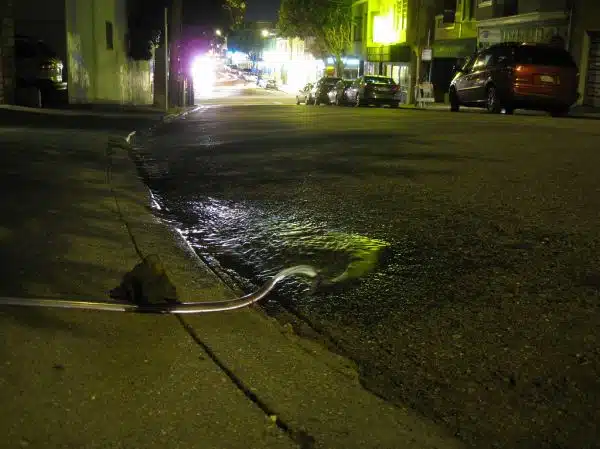



![How To Get Hair Out Of A Bathtub Drain 5 2/365 [Bathtub Drain]](https://green-life.blog/wp-content/uploads/2023/05/cOEu5edpkejq-150x150.jpg.webp)


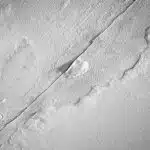
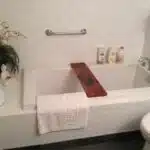
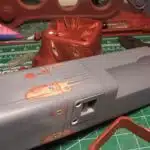
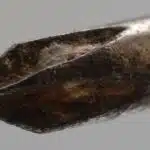

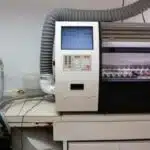
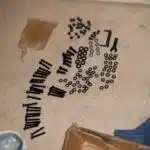

![How To Replace A Bathtub Drain In A Mobile Home 16 2/365 [Bathtub Drain]](https://green-life.blog/wp-content/uploads/2023/05/3ft8KAJsNnjq-150x150.jpg.webp)
